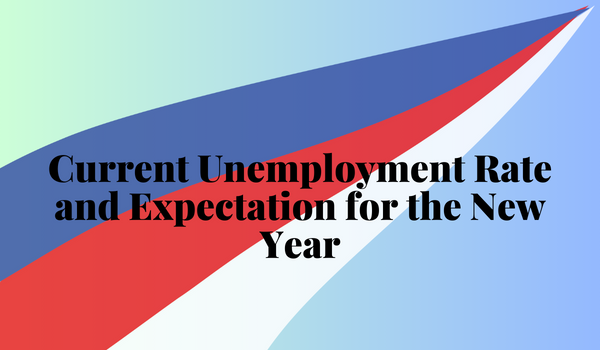The Philippines’ jobless situation saw a dramatic change in February 2024, with the rate falling to a noteworthy 3.5% from 4.8% in the same month the previous year and 4.5% in January 2024. Significant shifts in the nation’s economic landscape and labor market dynamics are reflected in this decline. These early figures, which offer a glimpse into the changing economic landscape and its ramifications for the Filipino workforce, were released by the Philippine Statistics Authority.

Unemployment Rate and Labor Force Dynamics
In February 2024, the official unemployment rate was 3.5%, which means that 1.80 million people over the age of 15 were unemployed. The fact that this number is lower than the 2.47 million jobless in February 2023 and the 2.15 million in January 2024 shows that job creation and labor market absorption are on the rise. The decline in unemployment is a positive indicator of stability and economic improvement.
48.95 million people were predicted to be employed in February 2024, up from 48.80 million in the same month the previous year and a notable increase over 45.94 million in January 2024. Maintaining economic momentum and bolstering consumer spending depend heavily on this employment expansion.
Labor Force Participation Rate
In February 2024, the labor force participation rate (LFPR) was 64.8%. This was better than the 61.1% recorded in January 2024, even though it was a drop from 66.6% in February 2023. The LFPR is a crucial measure of the working-age population’s active participation in the labor market, whether they are employed or jobless and actively looking for work.
Working Hours and Sectoral Employment
In February 2024, the average number of hours worked by employed individuals was 40.1. This was less than the 42.1 hours in January 2024, but it was an increase from 39.5 hours in February 2023. Numerous reasons, such as shifting industry demands, seasonal employment trends, and changes in economic situations, can be blamed for the variation in working hours.
The services sector remained the dominant employment sector, accounting for 60.6% of the total employed population. The agriculture and industry sectors followed, comprising 21.3% and 18.1% of the workforce, respectively.
Growth and Decline in Specific Sectors
The top five sub-sectors showing significant annual increases in employment were:
- Construction: 470,000 new jobs
- Transportation and storage: 444,000 new jobs
- Administrative and support service activities: 344,000 new jobs
- Manufacturing: 313,000 new jobs
- Accommodation and food service activities: 210,000 new jobs
These sectors reflect the areas where the Philippine economy is expanding, likely driven by infrastructural developments, increased manufacturing capacity, and growth in tourism and hospitality.
Conversely, the sectors experiencing the highest declines in employment were:
- Agriculture and forestry: a decrease of 834,000 jobs
- Fishing and aquaculture: a decrease of 490,000 jobs
- Public administration and defense; compulsory social security: a decrease of 418,000 jobs
- Information and communication: a decrease of 107,000 jobs
- Wholesale and retail trade; repair of motor vehicles and motorcycles: a decrease of 102,000 jobs
These declines could be attributed to several factors, including technological advancements, shifts in consumer behavior, and possibly policy changes affecting these industries.
Economic and Policy Implications
The fluctuations in sectoral employment and unemployment rates underscore the dynamic character of the Philippine economy and the requirement for flexible economic policy. For balanced economic growth and development, the government must be able to handle the issues in decreasing industries while also fostering an atmosphere that is favorable for the creation of jobs in developing ones.
Legislators should think about specific actions, such retraining programs, subsidies, and diversification incentives, to help industries that are losing jobs. Furthermore, industries that create jobs, such as manufacturing, transportation, and construction, can experience continuous growth if infrastructure and innovation investments are maintained.
A encouraging milestone in the nation’s efforts to recover economically is the decline in the unemployment rate in the Philippines in February 2024. However, in order to guarantee sustainable economic growth and fair job distribution, the issues raised by the sectoral shifts in employment demand nuanced governmental responses. The Philippines can maintain and expand these advantages and guarantee a strong economic future for its people by concentrating on sector-specific initiatives and creating an atmosphere that is favorable to company expansion and workforce development.
Read Also – $1312 PFD Stimulus Checks 2024: Know Eligibility & Direct Payment Dates



